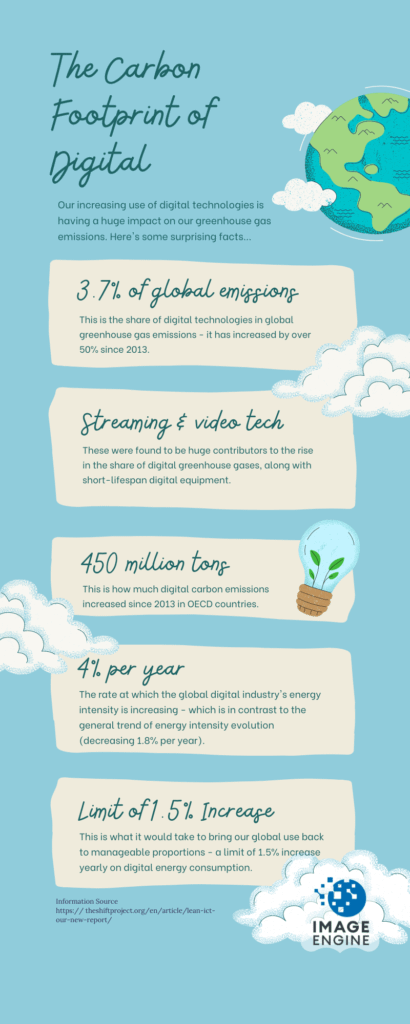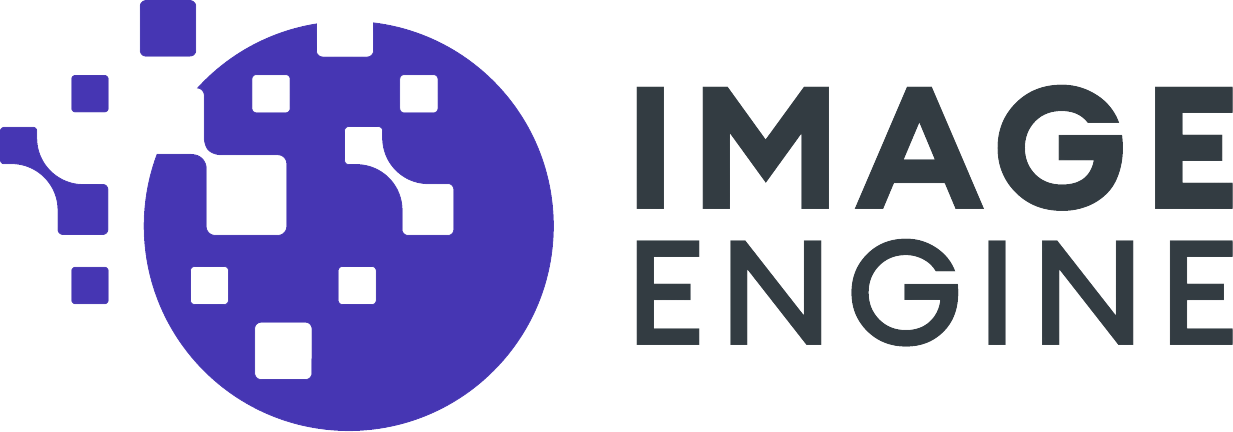Our increasing reliance on all things digital, from connected devices to IoT, AR, & VR, means we are using more energy than ever before. This rise in needed electricity, combined with the electricity needed to produce all of the technology mentioned, means a not-surprising rise in greenhouse gas emissions. Unfortunately, this trend shows no signs of slowing down. We need to work to find ways, both as individuals and as companies, to reduce our digital carbon footprint.

There are lots of ways we can cut down individually, from being less wasteful by not always purchasing the newest devices, to shutting off TVs and consoles when we leave the room, to purchasing our electricity from a provider that provides clean energy. Lots of little actions really do add up.
As a company, one of the biggest ways we can help cut down is through internet usage, and one of the best ways to do that is by decreasing the payload of your website. Over 60% of website payload is generally images, so that seems like a smart place to start, right? Using an image CDN like ImageEngine can help reduce your payload up to 80%! It’s a simple to implement solution that can be used out-of-the-box in most cases, and it can be optimizing your images perfectly for your customers in less than an hour.
When a customer visits your website, ImageEngine uses WURFL device detection to understand valuable data about their device and its settings, which it then uses to make decisions about how to optimize the images it serves to that customer. Complex algorithms factor in things like device type, browser, PPI, screen width, and support for next-gen image formats to precisely tailor images with the smallest payload but no loss of visual quality. This all happens within a worldwide network of device-aware edge servers that perform these computations and serve the images lightning fast. What does this mean for you? Perfectly optimized images for every customer, every time. 50% faster than traditional CDNs. A 90% reduction in responsive coding costs. All this, and it can help you become more environmentally friendly?
Reducing our carbon footprint, or moving towards “digital sobriety,” as The Shift Project terms it, is a complex problem with no one-step solution. But we’re all responsible for the situation we find ourselves in, and it’s our responsibility as good stewards of our planet to make every effort to mitigate our usage of digital technology that harms it.
